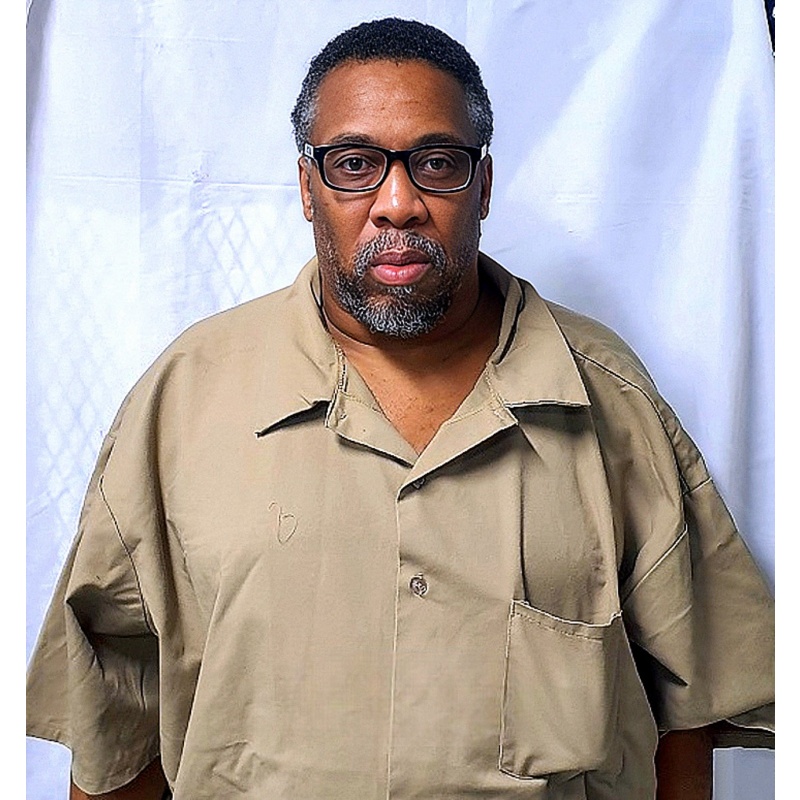ROBERT FRANKLIN SMALLWOOD JR | Swerial Killer Raped And Murdered 3 Women In Lexington, Kentucky, And Additionally Linked To Other Rapes | Autographed Letter Signed
LongfellowSerenade 29
Robert Franklin Smallwood Jr., born in December 1973 in Lexington, Kentucky, is a convicted serial killer responsible for the deaths of three women between 1999 and 2006. His criminal activities began in 1993 with the assault of 83-year-old Viola Green. Despite an acquittal in a 1998 sexual assault case, Smallwood continued his violent behavior, leading to the murders of Dorris Ann Roberts in 1999, Sonora Allen in 2002, and Erica Butler in 2006. A breakthrough in 2006 linked these crimes through DNA evidence, resulting in Smallwood's arrest and subsequent life sentence without parole in 2007. His actions profoundly impacted the Lexington community, highlighting the importance of DNA testing and inter-agency collaboration in solving such cases.
$40.00
- Postage
-
Standard Shipping
$0.00 to United States
Get Additional Rates
- Select Country
- Zip/Post Code
- Quantity
Description
Robert F Smallwood Jr. Autographed Letter, Signed. Handwritten, Commercial #10 (4.125 × 9.5 envelope). Charleston, WV. February 13, 2025. Content unknown. SEALED.
The Dark Path of Robert Franklin Smallwood Jr: From Troubled Beginnings to Serial Murder
Born in December 1973 in Lexington, Kentucky, Robert Franklin Smallwood Jr. emerged from a family shadowed by tragedy. His sister, Elizabeth, relocated to North Carolina, only to become the eighth victim of the still-unidentified Edgecombe County serial killer. In 1997, Robert married Neisha, and together they had five children before eventually separating.
Smallwood's criminal trajectory began in 1993 with a heinous assault on 83-year-old Viola Green. Breaking into her home, he bound and raped her, leaving her physically unharmed but emotionally scarred. Green passed away in 1998 without ever knowing the identity of her assailant. In 1998, Smallwood faced charges for sexually assaulting a woman found tied to a tree. Despite DNA evidence linking him to the crime, he was acquitted in 1999 after his defense argued the encounter was consensual.
Undeterred by legal repercussions, Smallwood escalated his violent tendencies. In December 1999, he murdered 48-year-old Dorris Ann Roberts in her apartment, strangling her with her own clothing. Three years later, in August 2002, he killed 29-year-old Sonora Allen, a mother of six, leaving her body in a parking lot with signs of possible sexual assault. While on probation for drug-related offenses, Smallwood committed his final known murder in April 2006, strangling 33-year-old Erica Butler in her home.
The breakthrough in these cases came in August 2006 when DNA testing linked the murders. Authorities formed a task force, and with the FBI's assistance, they identified Smallwood, who was already incarcerated for a probation violation. Confronted with the evidence, he pleaded guilty to the murders and the 1993 rape, receiving a life sentence without the possibility of parole in 2007.
Smallwood's actions left a trail of devastation, affecting the families of his victims and instilling fear within the Lexington community. The media dubbed him Lexington's first serial killer, prompting public discourse on the vulnerabilities of marginalized individuals. His case underscored the necessity for improved DNA testing and inter-agency collaboration, leading to reforms in forensic procedures and victim support systems.
Currently, Smallwood remains incarcerated, with no prospects for release. His case serves as a grim reminder of the importance of early intervention and comprehensive support for at-risk communities. Collecting autographed items from such individuals is generally discouraged, as it can be seen as glorifying their crimes and causing further distress to victims' families.
VIDEO: Unmasking the Serial Killer Robert Smallwood | Part 1 of 3 | https://youtu.be/nSglWtWWxN4
VIDEO: Unmasking the Serial Killer Robert Smallwood | Part 2 of 3 | https://youtu.be/p8mnFkZBvu4
VIDEO: Unmasking the Serial Killer Robert Smallwood | Part 3 of 3 | https://youtu.be/-DpiPTJYknI
Archiving Protocol:
• Handled with White Gloves ab initio
• Photo Pages/Sheet Protectors: Heavyweight Clear Sheet Protectors, Acid Free & Archival Safe, 8.5 × 11, Top Load
• White Backing Board – Acid Free
Shipping/Packaging: Rigid Mailer 9.5 × 12.5. White, self-seal, stay-flat, Kraft cardboard, no bend. Each rigid mailer is made of heavy cardboard, which has strong resistance to bending and tearing. Thicker than the USPS mailers. Shipping cost never more than it absolutely has to be to get it from me to you.
Payments & Returns
- Payment Methods
- PayPal, Money Order
Postage & Shipping
- Item Location
- 49858, Michigan, United States
- Ships To
- Worldwide
- Pick-ups
- No pick-ups
- Shipping Instructions
- Shipping costs to international destinations will be applied to this auction. Please contact us if you have any questions about shipping to your location.
- Returns Accepted
- No

-800x800.jpg)




-500x500.jpg)
-500x500.jpg)
-500x500.jpg)
-500x500.jpg)